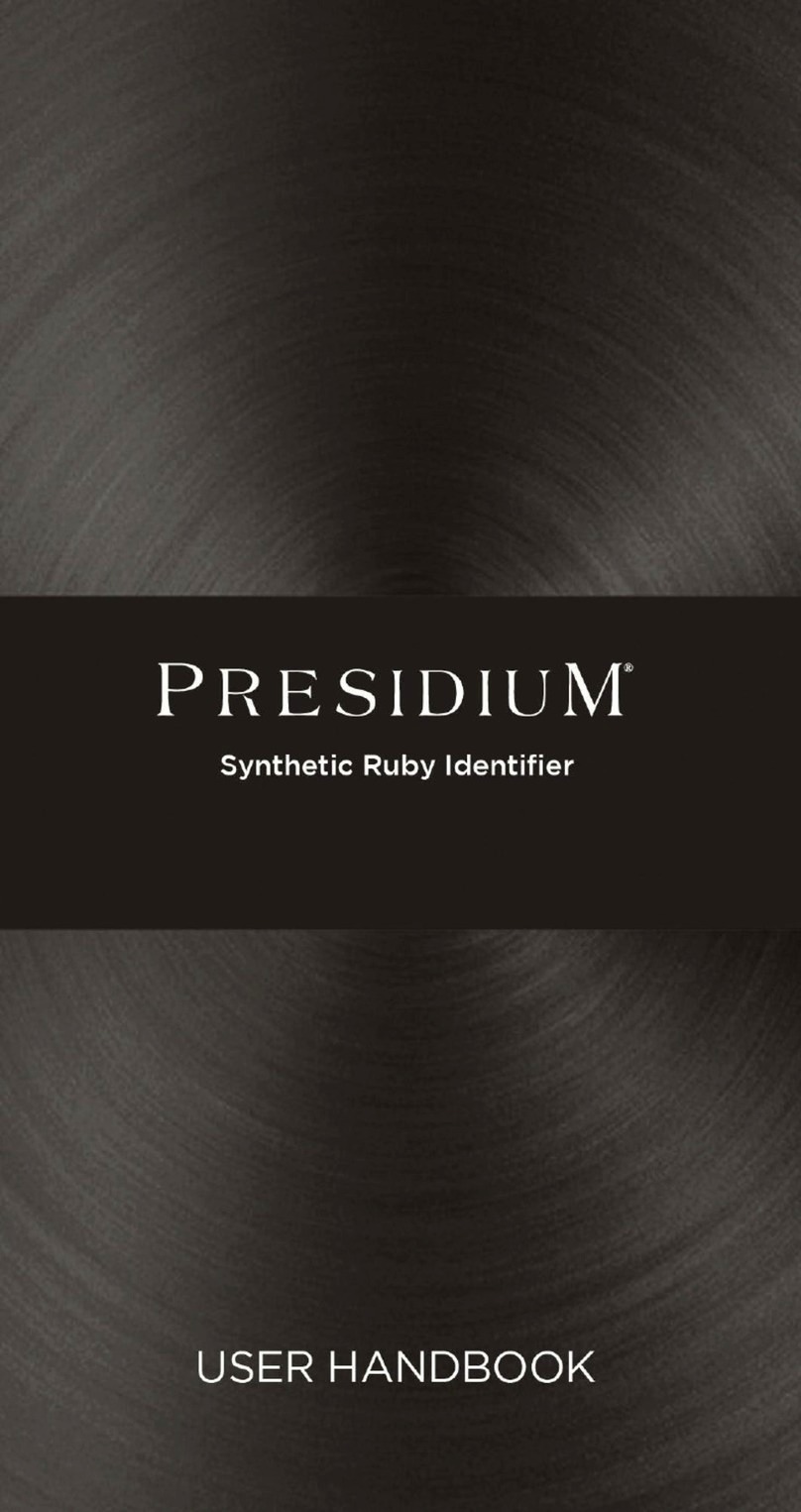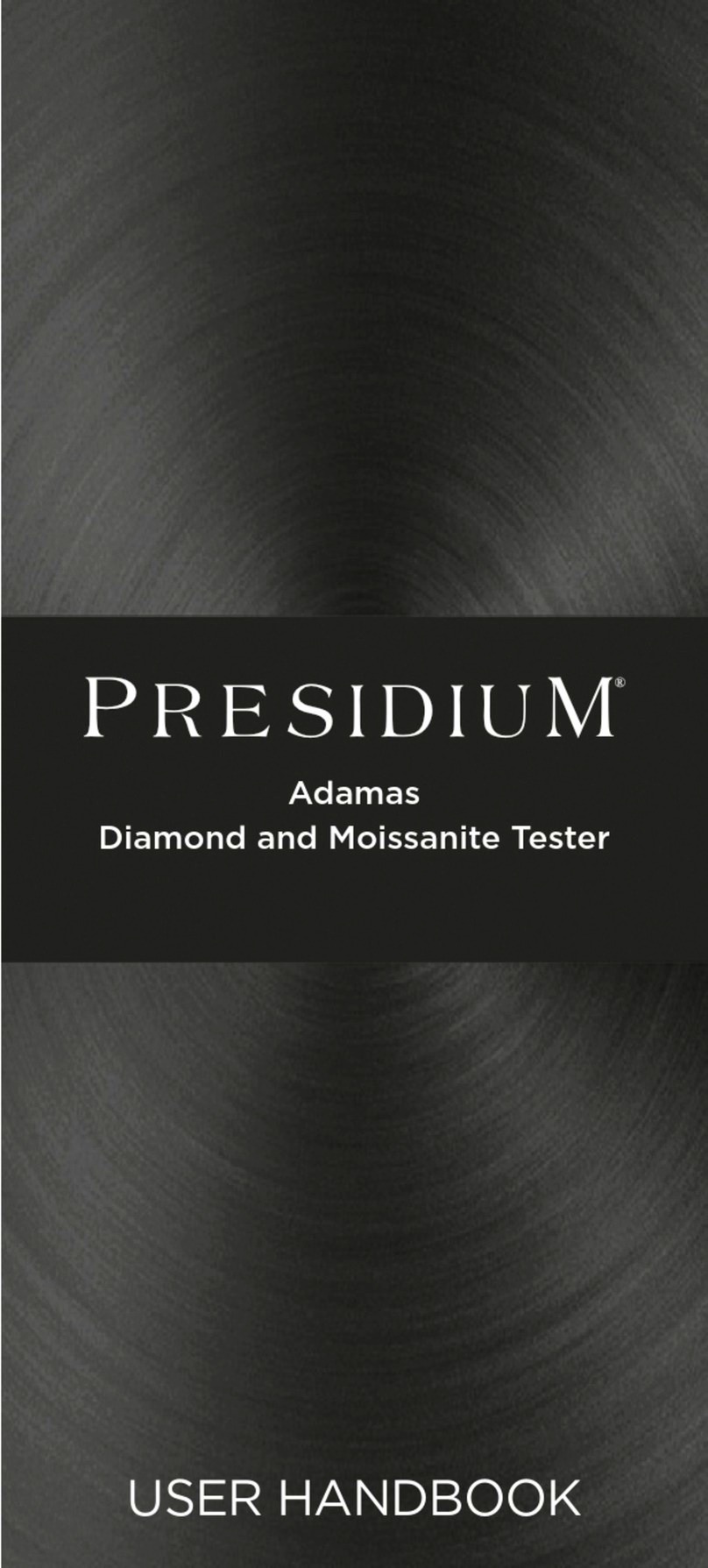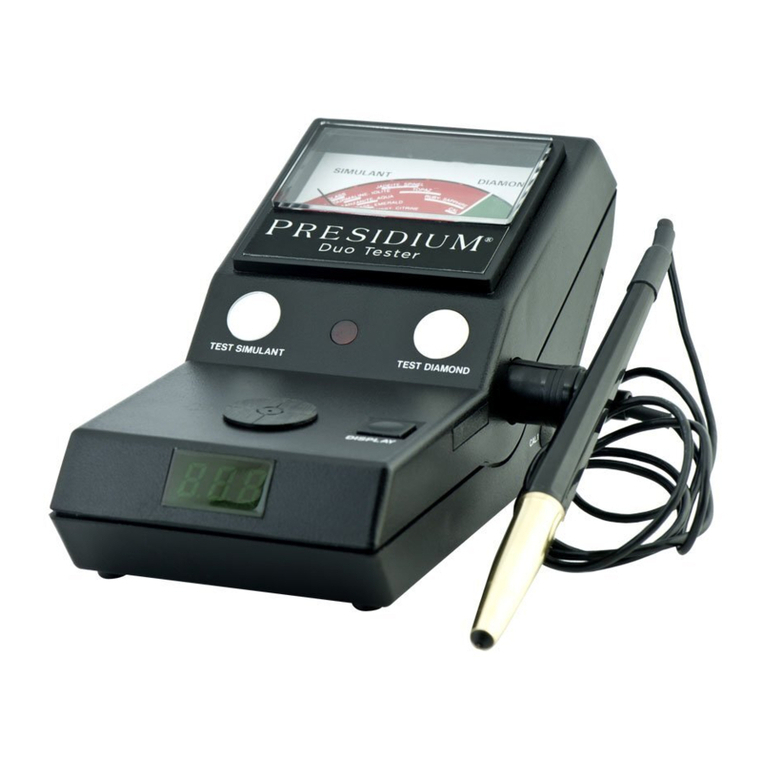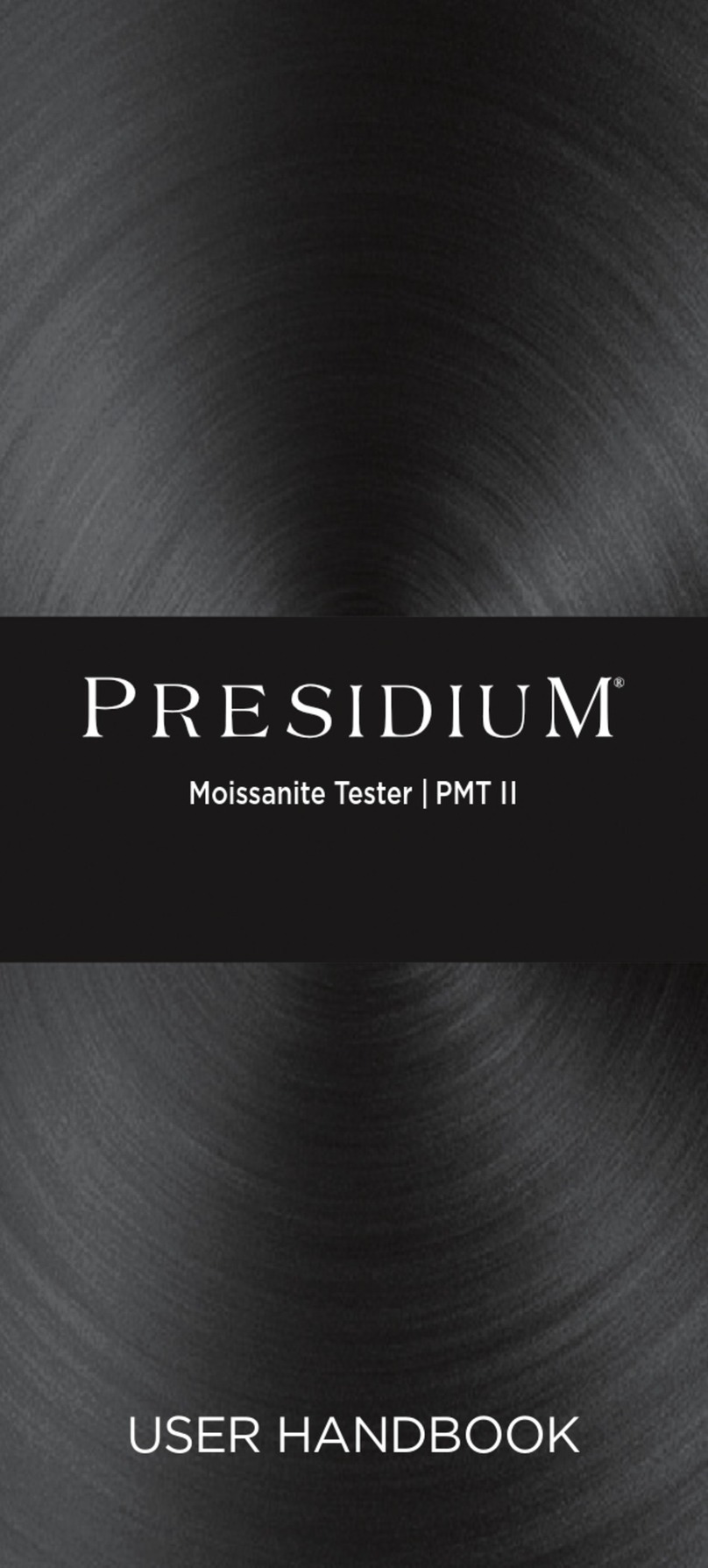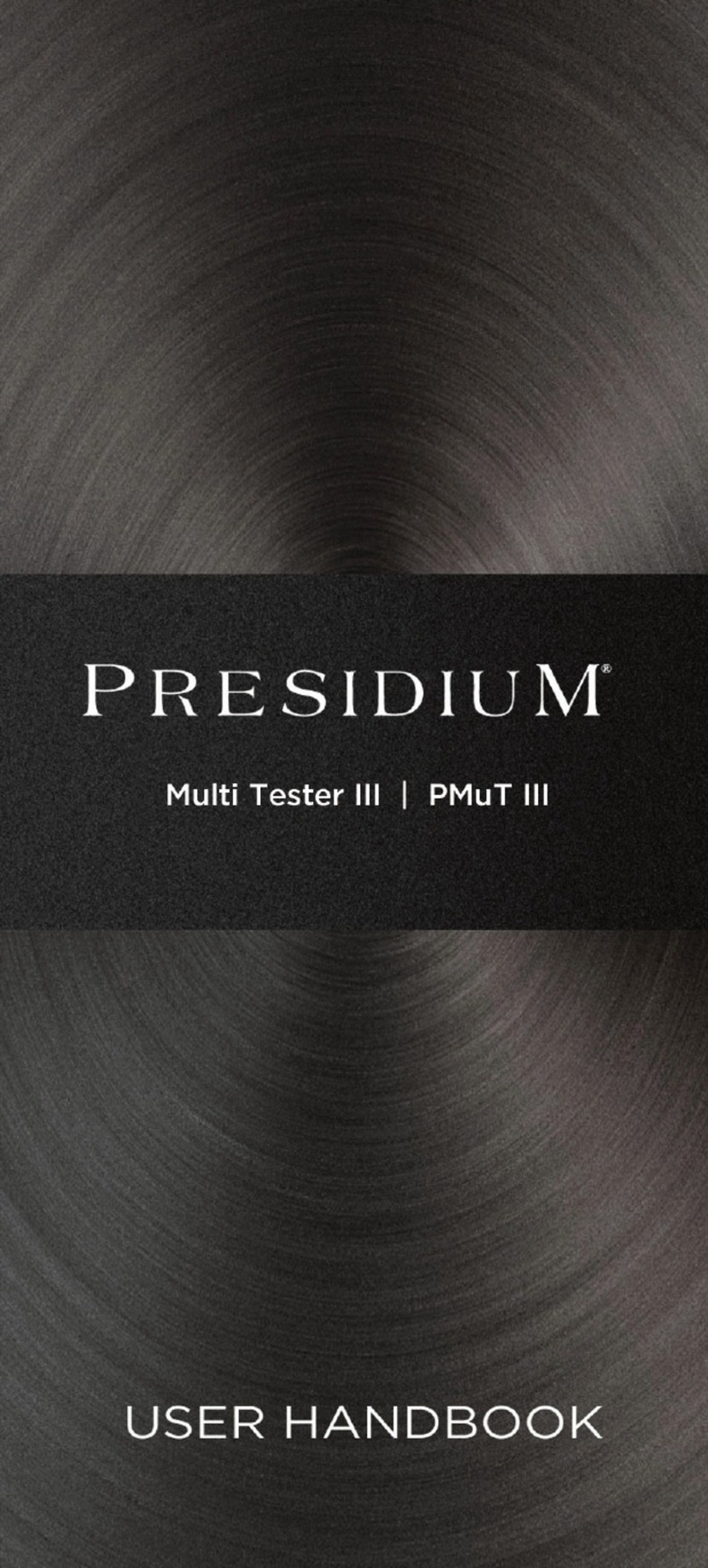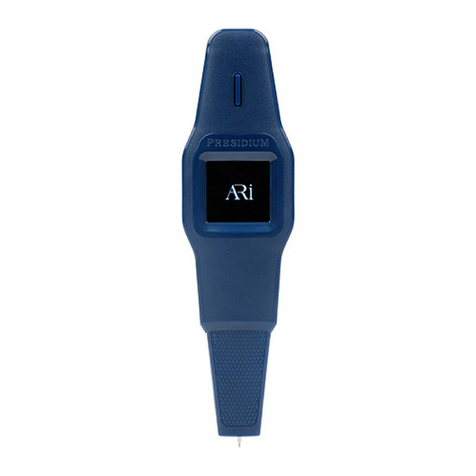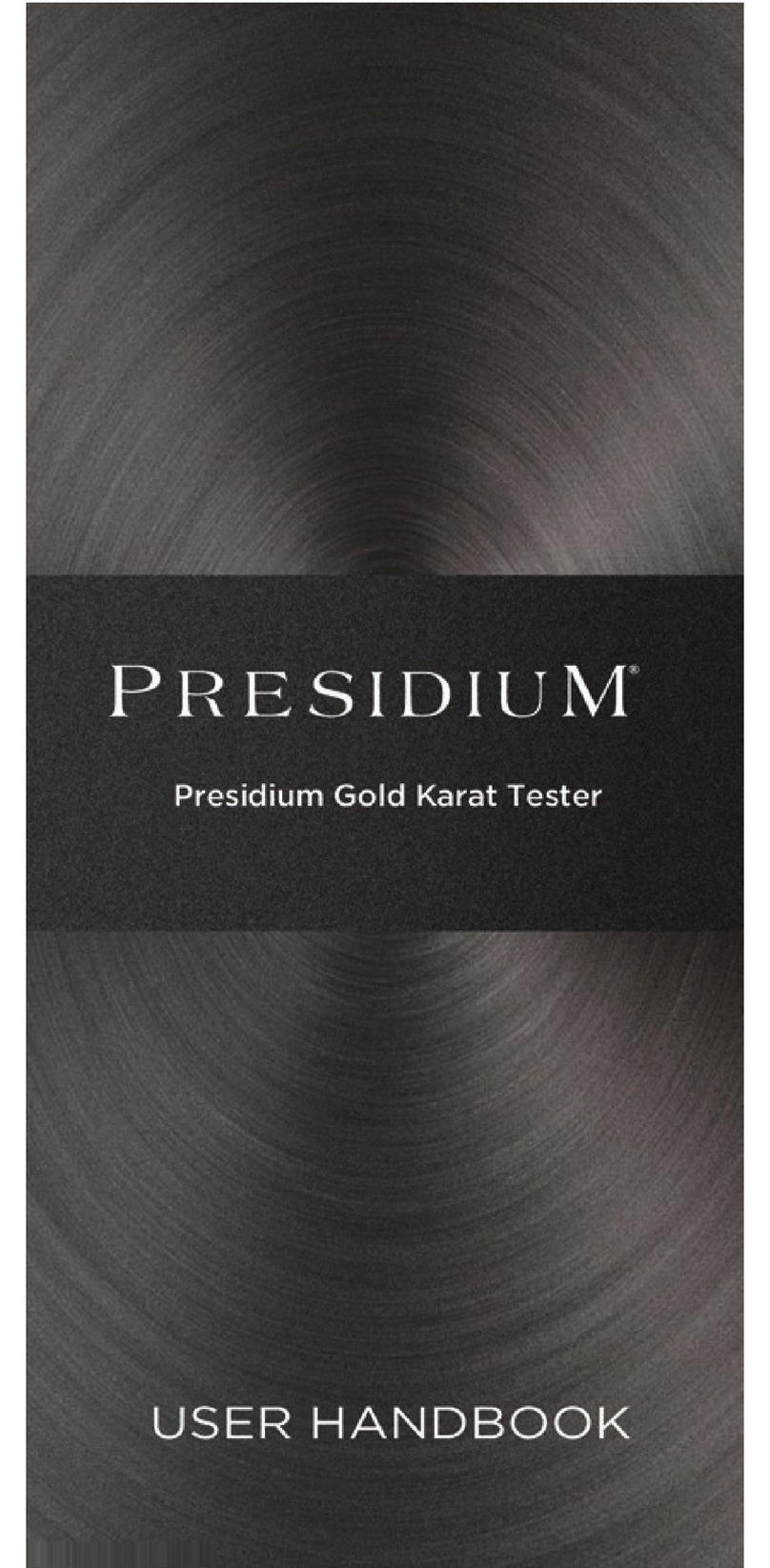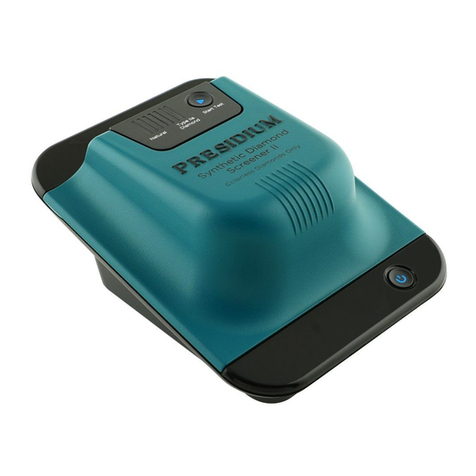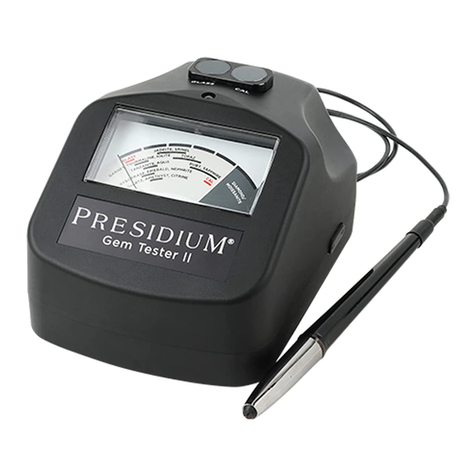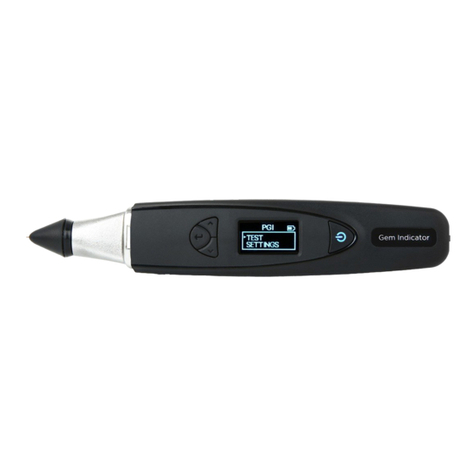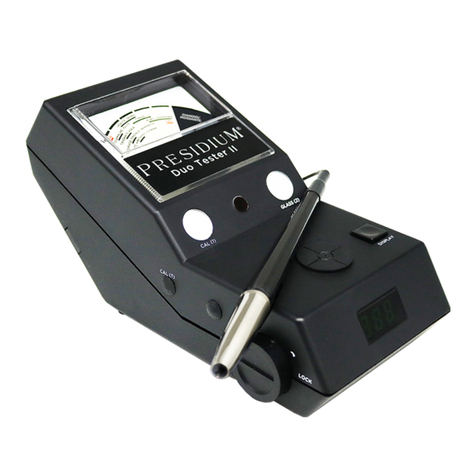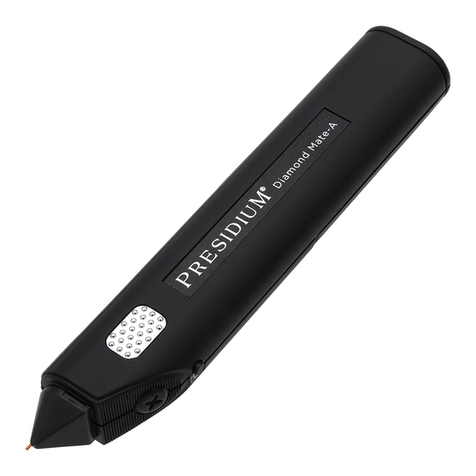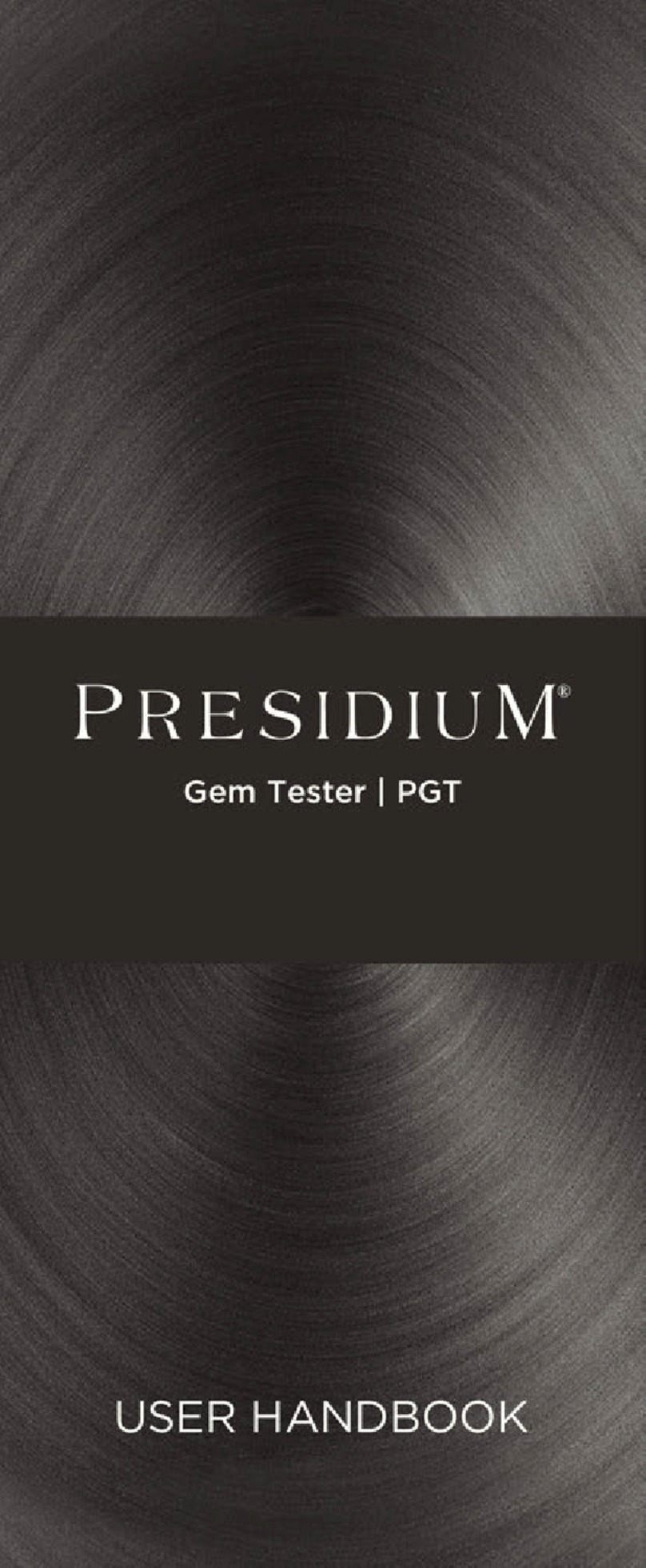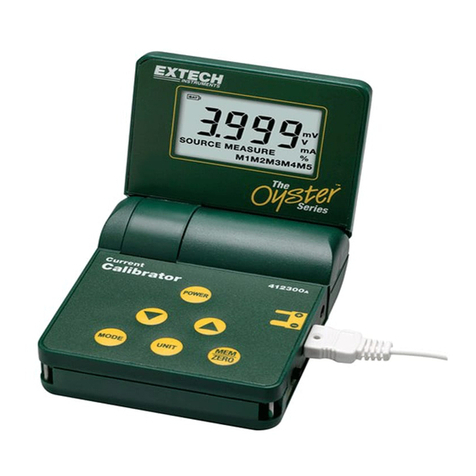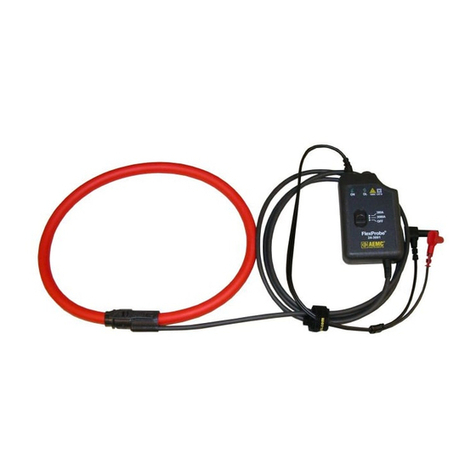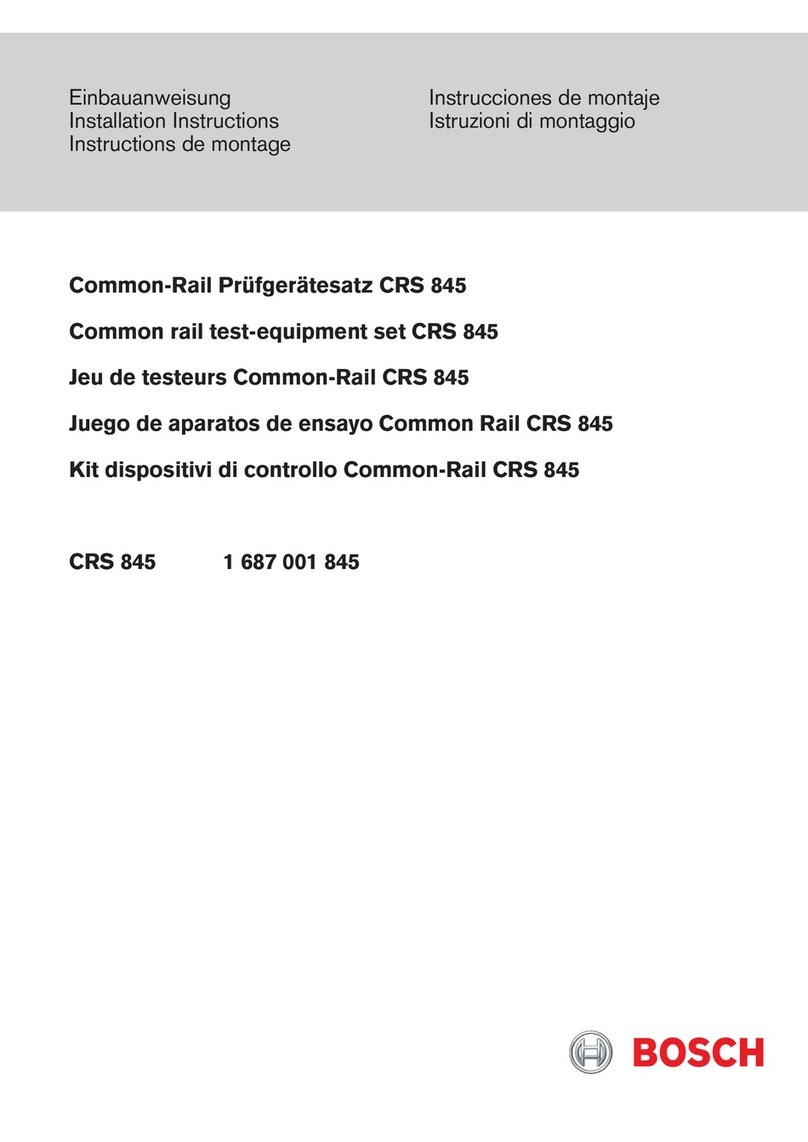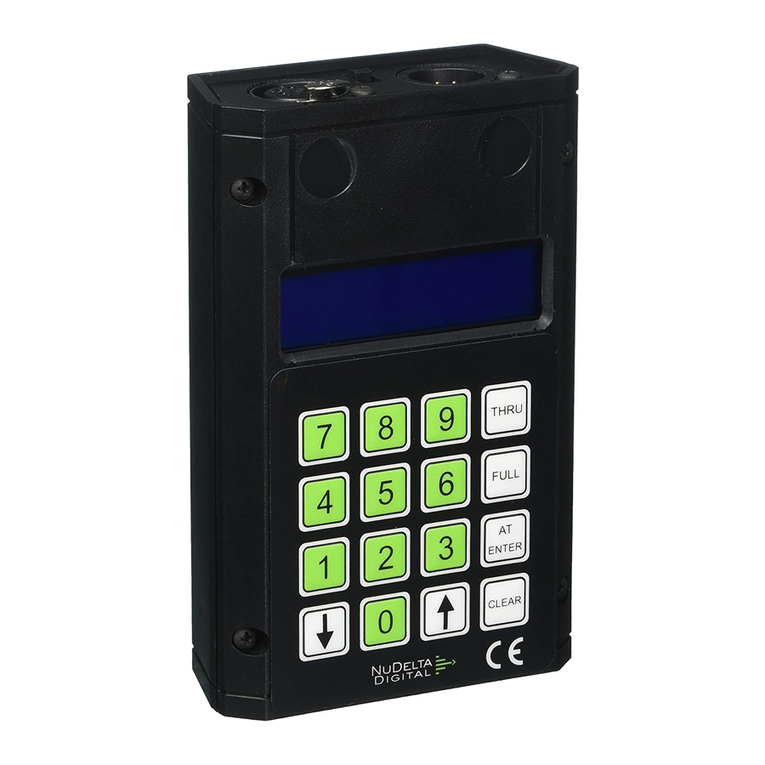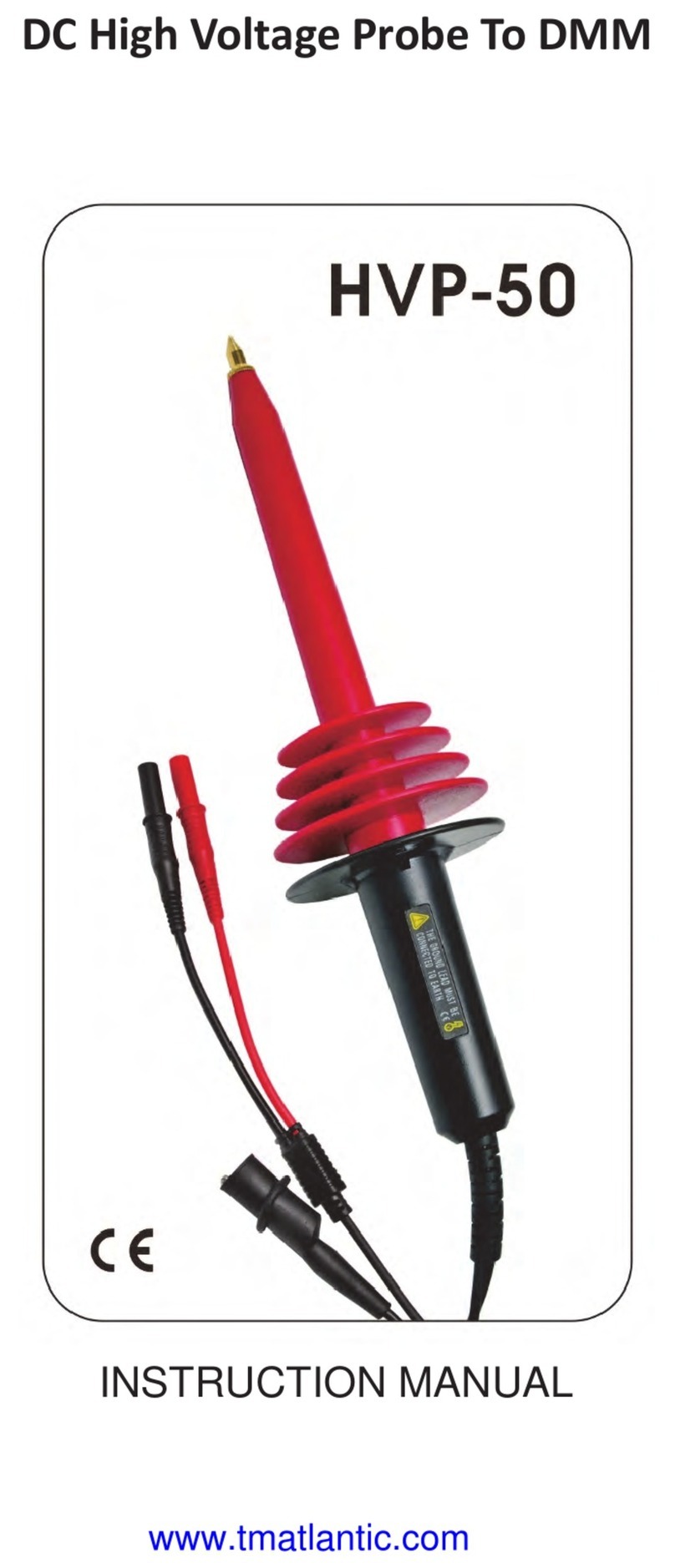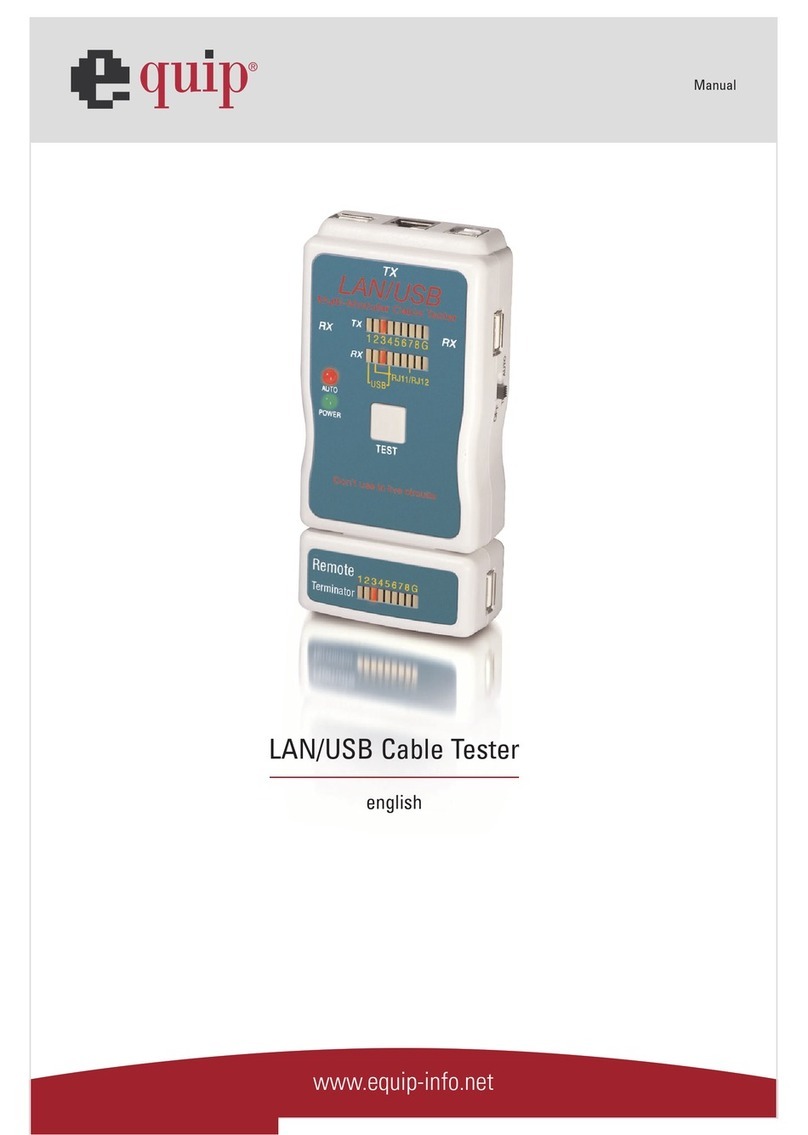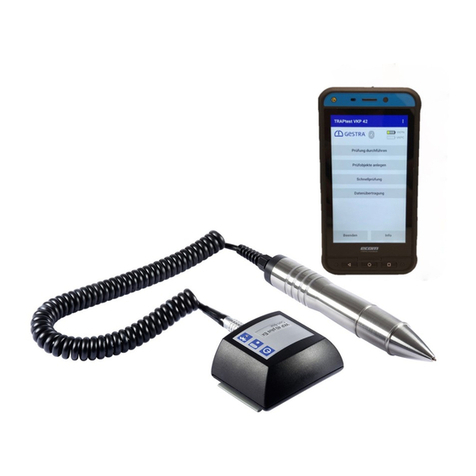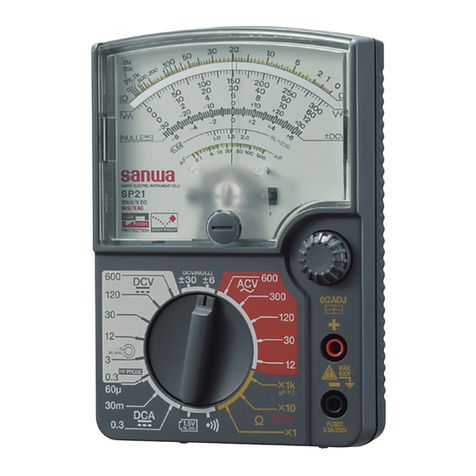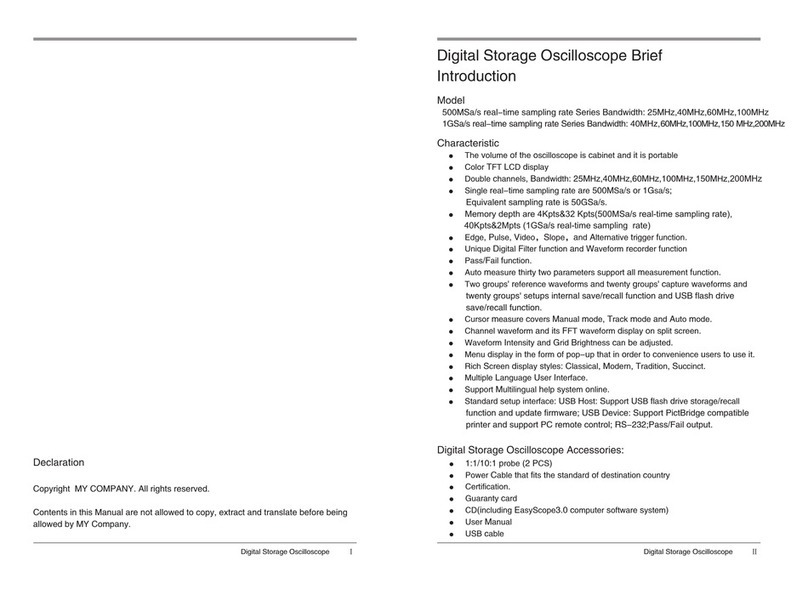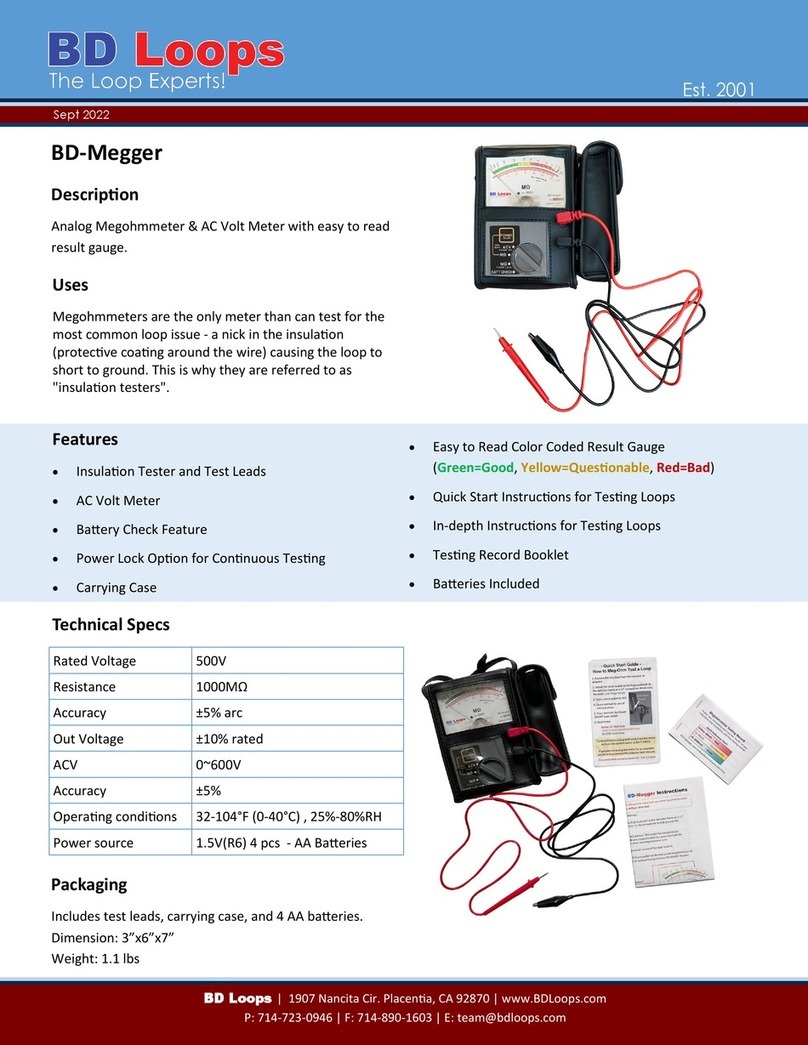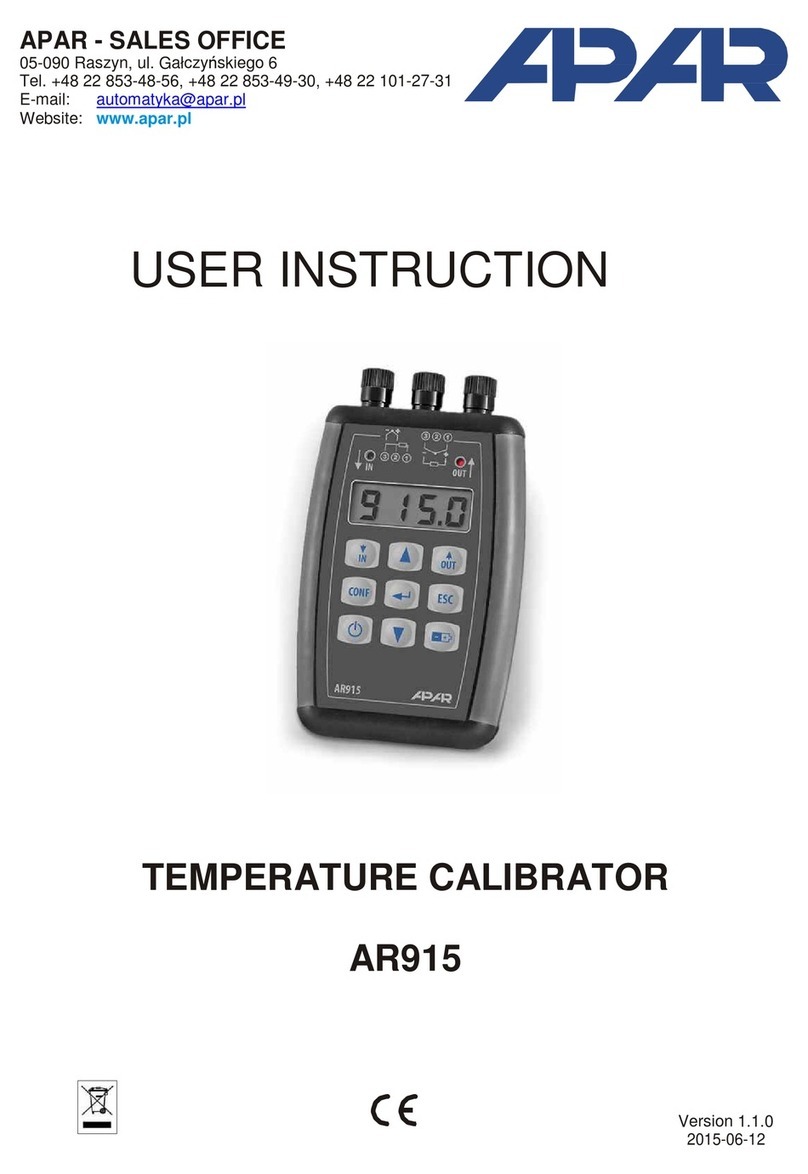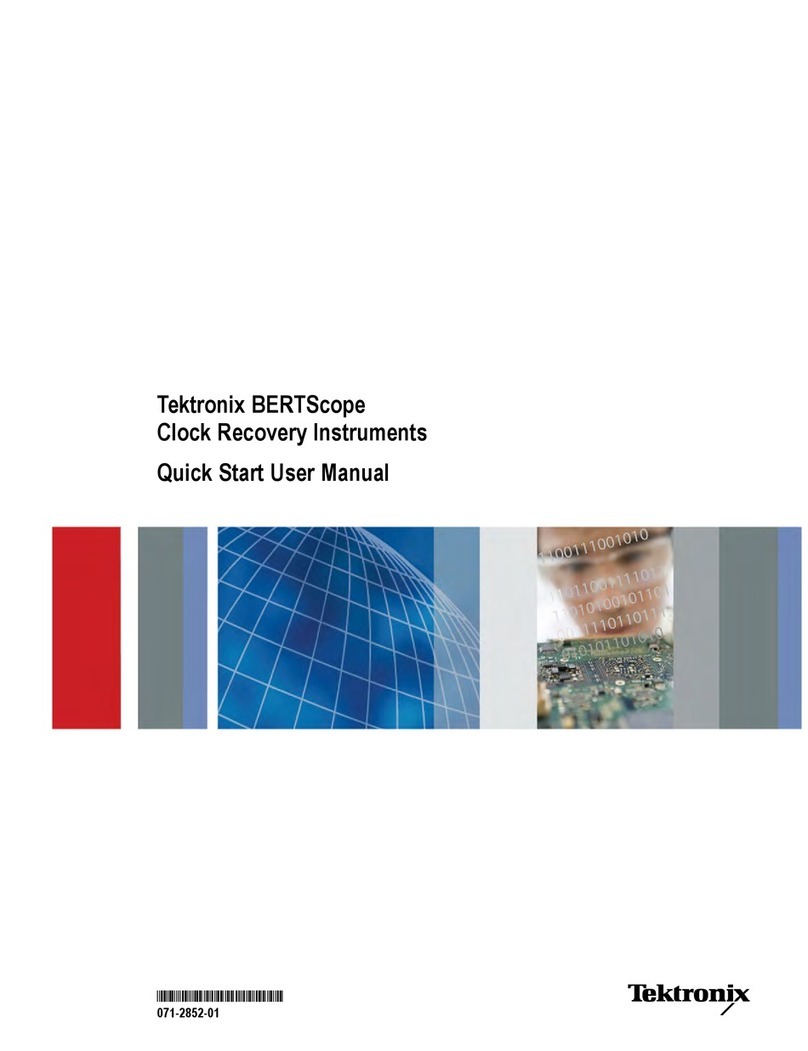
4
Currently, known synthetic colorless diamonds are generally Type IIa
diamonds i.e. colorless diamonds without any detectable presence of
nitrogen atoms. Type IIa colorless synthetic diamonds can be grown
either using chemical vapor deposition (CVD) synthesis or
High Pressure High Temperature (HPHT) synthesis, or can be HPHT-
treated CVD diamond.
This device helps to identify the Type IIa colorless diamond, which
may be a synthetic diamond, but does not distinguish between the
various processes through which the synthetic diamond may be grown
or treated.
When subjected to deep UV irradiation, Type Ia and Type IIa
diamonds absorb different amounts of UV light and this difference
in the light absorption is signicant enough to aid in differentiating
between Type Ia and Type IIa colorless diamonds.
The SDS II is developed and designed based on this principle. Type
IIa diamonds allow more deep UV light to pass through and thus its
UV light absorption ability is lower.
This device, meant only for use on colorless diamonds (Color D to
J), features a safe, user-activated, deep-wave UV light source that
passes through the tested stone towards the photo-detector on
the base platform inside the product. Bars of colored lights on the
front of the lid will provide an easy reading to indicate if the UV light
absorption ability of the tested stone is low (i.e. indicative of a Type IIa
diamond) or high (indicative of a natural diamond).
If the UV light absorption measurement is low, a single red light
bar will light up alerting the tested stone is a Type IIa diamond,
which could be synthetic and therefore should be subjected to other
supporting tests.
If the UV light absorption measurement is high, a single blue light bar
will light up, indicating that the UV light absorption of the tested stone
corresponds to the usual absorption range characteristic of a Type I
colorless natural diamond.
Created with the user in mind, the Synthetic Diamond Screener II
is designed to be a lightweight, portable, sturdy and non-slip unit
that can be powered by 4 AAA batteries or through its USB port that
connects to either an external power source or to the Presidium
Universal Power Adaptor.




















